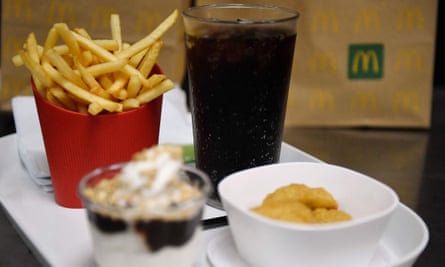When looking for something interesting, I found an astonishing article about the fast food industry in France. According to the article, France, ranked 4th in the Global sustainability index, adopted its comprehensive Anti-waste Law in 2020 (Snowdrop, 2022). This law mainly aims to reduce waste from the initial design stages and create a more recycling-oriented society. Specifically, it prohibits using disposable containers, plates, cups, and tableware from customer dining in restaurants starting in 2023 and seeks to phase out single-use plastic packaging by 2040(Elen Macarthur Foundation, n.d.).
This law has dramatically affected the fast-food industry because roughly 30,000 fast-food outlets in France serve 6bn meals annually, generating an estimated 180,000 tonnes of waste. Moreover, people eating in creating 55% of waste is another significant issue supporting this law’s dramatic effect(Chrisafis, 2022).

While the government expects to have a significant waste reduction by implementing this law, behind the scenes, fast-food industry companies were struggling to make this happen. According to McDonald’s manager Maria Varela in the Paris suburb of Levallois-Perret, she said, “Everything that was in cardboard is now in reusable plastic. We had to rethink Everything in the kitchen, separate take-out from on-site orders, create new storage space”. (Yadav, n.d.)
But after all that hard work, McDonald’s and other fast food restaurants are now complying with this law. Currently, this initiative is only being implemented in France, but I would love to see it in Japan in the near future, where sustainability initiatives are falling behind compared to the world.
References
Chrisafis, A. (2022, December 28). Ban on single-use restaurant tableware hailed as fast-food “revolution” in France. The Guardian. https://www.theguardian.com/world/2022/dec/28/france-ban-on-single-use-restaurant-tableware-hailed-as-fast-food-revolution
Elen Macarthur Foudation. (n.d.). France’s Anti-waste and Circular Economy Law. Ellenmacarthurfoundation.org. https://ellenmacarthurfoundation.org/circular-examples/frances-anti-waste-and-circular-economy-law
Snowdrop. (2022, September 26). Sustainability in France: Trends and Insights. Snowdrop Solution. https://snowdropsolutions.co.uk/sustainability-in-france-trends-2022/#:~:text=Overall%2C%20France%20ranks%20fourth%20worldwide%20on%20the%20Global
Yadav, N. (2022, December 20). McDonald’s In France Struggles With Asking Customers To Please Not Throw Cutlery In The Bin – McDonald’s (NYSE:MCD). Benzinga. https://www.benzinga.com/government/22/12/30139853/mcdonalds-in-france-struggles-with-asking-customers-to-please-not-throw-cutlery-in-the-bin

 Impact of Quantum computing on the environment
Impact of Quantum computing on the environment



